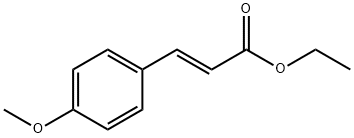Octyl 4-methoxycinnamate
Synonym(s):2-Ethylhexyl 4-methoxycinnamate;2-Ethylhexyl trans -4-methoxycinnamate;4-Methoxycinnamic acid 2-ethylhexyl ester;Octyl methoxycinnamate;OMC
- CAS NO.:5466-77-3
- Empirical Formula: C18H26O3
- Molecular Weight: 290.4
- MDL number: MFCD00072582
- EINECS: 226-775-7
- SAFETY DATA SHEET (SDS)
- Update Date: 2025-12-17 09:49:39

What is Octyl 4-methoxycinnamate?
Description
Octinoxate, or Octyl 4-methoxycinnamate, is a more recent sunscreen component. It is marketed by Merck under the tradename Eusolex 2292 and by BASF as Uvinul MC80. It absorbs primarily in the UV-B range.
Chemical properties
colourless or pale yellow liquid
The Uses of Octyl 4-methoxycinnamate
2-Ethylhexyl 4-Methoxycinnamate is an UV induced cyclobutane pyrimidine dimer (CDP) formation inhibitior.
The Uses of Octyl 4-methoxycinnamate
octinoxate is the drug name for the sunscreen chemical generally known as octyl methoxycinnamate and ethylhexyl methoxycinnamate.
The Uses of Octyl 4-methoxycinnamate
2-Ethylhexyl-4-methoxy-cinnamate is used as UV-B-absorbing agent in sunscreens and cosmetic creams, lotions, lipsticks, sun oils, etc.
Background
Octinoxate is a cinnamate ester and common ingredient in sunscreen and other skin care products to minimize DNA photodamage. It was originally developed in 1950's as an organic UV-B filter that absorbs UV-B rays from sun. It is often combined with nanoparticles or other water-resistant liposomes in formulations to increase the localization at the epidermis and decrease the risk of percutaneous absorption. Its use in pharmaceutical and cosmetic formulations is approved by FDA.
Indications
Octinoxate is used as an active ingredient in sunscreens and lip balms. Used for protection against damaging effects of sun rays.
Definition
ChEBI: Octyl 4-methoxycinnamic acid is a cinnamate ester.
brand name
Parsol (Roche); Neo Heliopan (H & R Florasynth); Escalol (ISP Van Dyk) Note—The International Cosmetic Ingredient (INCI) name for octinoxate is octyl methoxycinnamate.
General Description
Colorless to pale yellow viscous liquid.
Air & Water Reactions
Insoluble in water.
Fire Hazard
Flash point data for Octyl 4-methoxycinnamate are not available, however, Octyl 4-methoxycinnamate is probably combustible.
Pharmacokinetics
Acts as a photoprotective agent that protects the skin by preventing and minimizing the damaging effects of ultraviolet (UV) rays of natural light. The cellular effects of UV irradiation include DNA damage, cell cycle arrest, immunological depression, apoptosis, and transcriptional changes .
Preparation
Octyl 4-methoxycinnamate is formed by combining methoxycinnamic acid and 2-ethylhexanol.
Absorption
Can be systemically absorbed after skin application, being found in the deeper layers of the stratum corneum as well as urine, plasma, and breast milk . The mean maximum plasma concentration detected after application of 2mg/cm2 sunscreen was 7ng/mL in women and 16ng/mL in men .
Metabolism
Can undergo hepatic metabolism when systematically absorbed. Can be enzymatically degraded by lipases in the stratum corneum where esters undergo hydrolysis . Degrade into photoproducts when exposed to sunlight, which leads to a decrease in UV absorption efficiency .
Toxicity
Slightly hazardous in case of skin contact, eye contact, ingestion and inhalation. Octinoxate may form reactive singlet oxygen species and induce anti-estrogenic effects . UV-induced molecular breakdown of octinoxate may interfere with cellular processes or induce oxidative damage in human skin . The NOAEL (no observed adverse effect level) is 450 mg/kg bw/day for fertility and reproductive performance, for systemic parental and developmental toxicity in Wistar rats .
Properties of Octyl 4-methoxycinnamate
| Melting point: | <-25℃ |
| Boiling point: | 198-200°C |
| Density | 1.009 |
| refractive index | 1.543-1.547 |
| Flash point: | 193°C |
| storage temp. | 2-8°C |
| solubility | Chloroform (Slightly), Methanol (Slightly) |
| appearance | colorless to pale yellow viscous liquid |
| form | Liquid |
| color | Clear colorless to yellow |
| Water Solubility | <0.1 g/100 mL at 27 ºC |
| BRN | 5946632 |
| Stability: | Stable. Incompatible with strong oxidizing agents. |
| CAS DataBase Reference | 5466-77-3(CAS DataBase Reference) |
| NIST Chemistry Reference | 2-Propenoic acid, 3-(4-methoxyphenyl)-, 2-ethylhexyl ester(5466-77-3) |
| EPA Substance Registry System | 2-Ethylhexyl p-methoxycinnamate (5466-77-3) |
Safety information for Octyl 4-methoxycinnamate
| Signal word | Warning |
| Pictogram(s) |
 Exclamation Mark Irritant GHS07 |
| GHS Hazard Statements |
H413:Hazardous to the aquatic environment, long-term hazard |
| Precautionary Statement Codes |
P273:Avoid release to the environment. |
Computed Descriptors for Octyl 4-methoxycinnamate
| InChIKey | YBGZDTIWKVFICR-JLHYYAGUSA-N |
Octyl 4-methoxycinnamate manufacturer
Neshiel Agrochem Private Limited
Aashi Chem
New Products
4,4-Difluoropiperidine hydrochloride tert-butyl 9-methoxy-3-azaspiro[5.5]undecane-3-carboxylate Indole Methyl Resin N-Isopropylurea N,N-Dicyclohexylcarbodiimide(DCC) MELDRUMS ACID 5-METHYLISOXAZOLE-4-CARBOXYLIC ACID Magnessium Bis glycinate Zinc ascorbate 1-bromo-2-butyne 2-acetamidophenol 9(10H)-anthracenone Erythrosin B, 4-Piperidinopiperidine 2-((4-morpholinophenylamino) (methylthio) methylene) malononitrile 2,4-dihydroxybenzaldehyde 3-(4-morpholinophenylamino)-5-amino-1H-pyrazole-4-carbonitrile Methyl 2-methylquinoline-6-carboxylate 2,6-dichloro-4-nitropyridine 4-Bromo-2-chlorobenzonitrile 2-(benzylamino)acetic acid hydrochloride 4-(tert-Butoxycarbonylamino)but- 2-ynoic acid 3,4-dihydro-2H-benzo[b][1,4]dioxepine 1-Phenyl-1-cycloprppanecarboxylicacidRelated products of tetrahydrofuran








You may like
-
 2-Ethylhexyl 4-Methoxycinnamate CAS 5466-77-3View Details
2-Ethylhexyl 4-Methoxycinnamate CAS 5466-77-3View Details
5466-77-3 -
 Octinoxate CAS 5466-77-3View Details
Octinoxate CAS 5466-77-3View Details
5466-77-3 -
 2-Ethylhexyl 4-methoxycinnamate CAS 5466-77-3View Details
2-Ethylhexyl 4-methoxycinnamate CAS 5466-77-3View Details
5466-77-3 -
 2-Ethylhexyl 4-methoxycinnamate CAS 5466-77-3View Details
2-Ethylhexyl 4-methoxycinnamate CAS 5466-77-3View Details
5466-77-3 -
 Octinoxate CAS 5466-77-3View Details
Octinoxate CAS 5466-77-3View Details
5466-77-3 -
 Octyl Methoxycinnamate, Purity: 99, 25 kgView Details
Octyl Methoxycinnamate, Purity: 99, 25 kgView Details
5466-77-3 -
 Yellow Octyl Methoxy Cinnamate Omc, Purity: 99.5 %, 5466-77-3View Details
Yellow Octyl Methoxy Cinnamate Omc, Purity: 99.5 %, 5466-77-3View Details
5466-77-3 -
 Octyl Methoxycinnamate (Omc), Purity: 98 % Min.View Details
Octyl Methoxycinnamate (Omc), Purity: 98 % Min.View Details
5466-77-3
